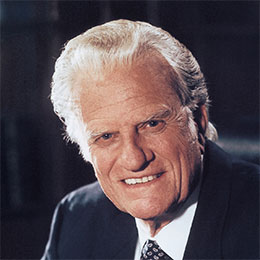Planning for health care costs in retirement
Published in Senior Living
Retirement: It’s that time when you should be able to kick back, relax and finally enjoy the fruits of your hard work. But let’s be honest — one of the biggest worries retirees face is the rising cost of health care. Medical expenses aren’t slowing down, and if you’re not prepared, they can hit you like a ton of bricks.
Take David and Linda, for example. They’re a couple in their early 60s who worked hard and saved well. They felt confident about their retirement plan— until health care costs started to feel like a dark cloud hanging over their heads. Sure, they knew Medicare would help, but what about all those gaps and extra costs no one really talks about?
The truth is, health care costs can sneak up on you. According to Fidelity Investments, a 65-year-old couple retiring today can expect to spend over $300,000 on their combined health care throughout retirement — and that doesn’t even include long-term care.
When David and Linda heard that number, they knew they had to get serious about planning.
They started by taking a closer look at their health. David had a history of high blood pressure, and Linda had been managing Type 2 diabetes for years. On top of that, their family medical histories revealed more risks — heart disease for David and arthritis for Linda.
Recognizing these potential concerns gave them some clarity. If they wanted to protect their financial future, they needed to prepare for medical costs beyond the basics.
Looking at Medicare
Medicare seemed like the next big puzzle to solve. David dove into the research and quickly realized there was more to it than he expected.
Medicare Part A would cover hospital stays, while Part B handled outpatient services and preventive care. Part D was crucial, too, helping to manage the cost of prescription drugs.
But the gaps — those hidden expenses that Medicare doesn’t cover— were still concerning. After weighing their options, David and Linda chose a Medigap policy to help fill those gaps. It wasn’t the easiest decision, but knowing their out-of-pocket costs would be manageable helped give them peace of mind.
Even with that coverage, they knew surprises could still pop up. So, they decided to build a dedicated health care fund. Thankfully, they had been contributing to a health savings account (HSA) for years, giving them a nice tax-free pool of money to use for qualified medical expenses.
To stay ahead of inflation and rising health care costs, they shifted part of their investment portfolio toward growth-oriented assets as well.
One concern that kept nagging at them was the cost of long-term care. A close family friend had recently faced staggering nursing home expenses, and David and Linda didn’t want to end up in the same situation.
After exploring their options, they chose a hybrid life insurance policy with a long-term care rider. This gave them the reassurance that their savings wouldn’t be wiped out if they needed extended care.
Considering prescription drug costs
Prescription drug costs were another area they tackled. They learned that switching to generic medications whenever possible can save a bundle.
They also started using tools like GoodRx to compare prices and make sure they were getting the best deals.
To stay on top of things, they reviewed their Medicare Part D plan every year to ensure their medications were still covered in the most cost-effective way.
Beyond financial planning, David and Linda realized they needed to prioritize their health to avoid bigger medical costs later on. They committed to regular checkups, screenings and vaccinations to catch potential issues early.
They also made lifestyle changes — morning walks, healthier meals and more active social lives. Surprisingly, these changes didn’t just improve their health — they also deepened their connection with each other and their community.
Feeling more confident but still wanting to make sure everything was buttoned up, David and Linda met with their financial adviser. Together, they mapped out a tax-efficient withdrawal strategy, aligned their retirement income with projected health care costs and made smart decisions about when to take Social Security.
With those final pieces in place, they knew they were ready.
Planning pays off
In the end, their preparation paid off. David and Linda entered retirement with confidence instead of anxiety. With a solid plan in place to handle health care costs, they were free to focus on what truly mattered to them: spending time with their family, traveling and embracing the retirement they had always dreamed of.
Planning for health care in retirement may seem overwhelming, but taking the time to prepare can offer incredible peace of mind. By assessing your health care needs, maximizing your Medicare benefits and building a dedicated savings strategy, you can better ensure your retirement is both secure and enjoyable.
The key is to start early, stay informed and remain proactive in managing your health care expenses.
(Bob Chitrathorn is a contributing writer to Kiplinger.com.)
©2025 The Kiplinger Washington Editors, Inc. All rights reserved. Distributed by Tribune Content Agency, LLC.
























Comments